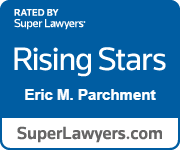Ready to Fight for You
Employer Requirements For Scaffolding Safety
Approximately 65% of all construction workers do their job on scaffolding. Scaffolding is defined as any temporary elevated platform. Working on these platforms can create the potential for workers to be injured from a fall, bad planking, electrocution, a dropped object and more.
To prevent construction workers and civilians from injury, the Occupational Safety and Health Administration (OSHA) has a series of precautions employers must take to keep scaffolding safe.
New York construction employers must ensure that all scaffolding is:
- Designed, erected and disassembled by a competent person
- Inspected by a competent person before the start of each workday
- Erected on solid footing
- Made using cleated planks that are secure
- Far enough away from power lines (10 feet if the voltage is less than 50 kV (kilovolts) and more than 10 feet and 4 inches for every 1 kV over 50 kV)
- Equipped with guardrails, midrails and toeboards
- Equipped with proper fall protection if scaffold is suspended over 10 feet above ground
- Not overloaded or in poor condition
Employees can do their part to make work safe by wearing safety gear, like hard hats, eye protection, non-skid work boots and a tool lanyard. It’s also a good idea for employees to be mindful of weather conditions, how tools are handled and the maximum loading weight for each scaffold.
If you or someone you know has been injured in a scaffolding accident, contact an attorney as soon as possible to discuss your case. In New York, the statute of limitations for most personal injury cases is three years from the date of the injury. An attorney may be able to help you receive compensation for medical bills, lost wages and suffering.
How Can We Help You?
Fields marked with an * are required
"*" indicates required fields




